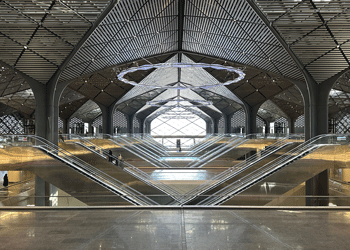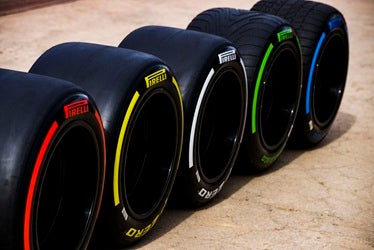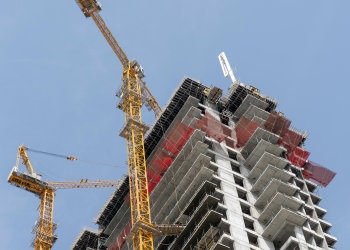Expectation grows for Yanbu wind IPP award
23 May 2024
 Commentary
Commentary
Jennifer Aguinaldo
Energy & technology editor
Market expectations and speculation have intensified regarding the third wind independent power project (IPP) – the 700MW Yanbu scheme – that the Saudi principal buyer tendered as part of round four of Saudi Arabia's National Renewable Energy Programme (NREP).
This follows the signing of power-purchase agreements (PPAs) on 21 May by the Energy Ministry's Saudi Power Procurement Company and a consortium of Japan's Marubeni Corporation and the local Ajlan & Bros for the contracts to develop two wind IPP schemes that belong to the NREP round four.
The Marubeni-led consortium has agreed to develop and operate the 600MW Al Ghat wind IPP project with a new world-record-low levelised electricity cost (LCOE) from wind power of $cents 1.56558 a kilowatt-hour (kWh), or about 5.87094 halalas/kWh.
The 500MW Waad Al Shamal project has also achieved a second world-record-low tariff for wind power of $cents 1.70187/kWh or 6.38201 halalas/kWh, the ministry has announced.
The tariff achieved for Al Ghat is almost 22% lower compared to the LCOE agreed for Saudi Arabia's first wind IPP, the 400 Dumat Al Jandal scheme, which was awarded in 2019.
MEED understands the final approval process is under way for the Yanbu wind IPP contract award.
Speculation over the winning bidder and the tariff proposed by that team varies.
Some assume that the Yanbu wind IPP's higher capacity and potential lower capacity factor and the world-record-low tariffs achieved for Al Ghat and Waad Al Shamal imply that the LCOE for the Yanbu wind contract will be even lower than either.
The same text that says "world-record-low" tariffs, attributed to Saudi Energy Minister Prince Abdulaziz Bin Salman Bin Abdulaziz Al Saud, may also imply the opposite, though less plausible, outcome: that the winning bidder for the Yanbu wind scheme may have proposed a higher tariff than those achieved for Al Ghat and Waad Al Shamal.
Industry sources previously told MEED that the favourites to win the three contracts, in addition to Marubeni, were the teams separately led by Riyadh-based Acwa Power and France's Engie.
However, the Marubeni-led team's successful bid for the two contracts means one of the region's two largest utility developers will go home empty-handed, assuming the industry sources are correct.
Exclusive from Meed
-
 Saudi construction pivots from gigaprojects to events
Saudi construction pivots from gigaprojects to events10 September 2025
-
 Infrastructure takes centre stage in Saudi strategy
Infrastructure takes centre stage in Saudi strategy10 September 2025
-
 PIF firm awards $167m Pirelli tyre plant deal
PIF firm awards $167m Pirelli tyre plant deal10 September 2025
-
 Egypt announces $19bn Red Sea Marassi project
Egypt announces $19bn Red Sea Marassi project10 September 2025
-
 NMDC plans to award Mukaab raft works ‘very shortly’
NMDC plans to award Mukaab raft works ‘very shortly’10 September 2025
All of this is only 1% of what MEED.com has to offer
Subscribe now and unlock all the 153,671 articles on MEED.com
- All the latest news, data, and market intelligence across MENA at your fingerprints
- First-hand updates and inside information on projects, clients and competitors that matter to you
- 20 years' archive of information, data, and news for you to access at your convenience
- Strategize to succeed and minimise risks with timely analysis of current and future market trends

Related Articles
-
 Saudi construction pivots from gigaprojects to events
Saudi construction pivots from gigaprojects to events10 September 2025

Saudi Arabia’s construction sector is undergoing a transition in 2025, shifting from the gigaproject era that dominated market activity between 2020 and 2024 to a new phase focused on delivering high-profile international events.
As the market pivots, it has entered a quieter phase compared to the previous three years. As of the end of August, the total value of construction contract awards stood at $15.5bn, according to regional projects tracker MEED Projects, which is significantly below the annual totals recorded since 2021.
The market had grown significantly during the gigaprojects era, from $19.2bn in 2021 to $29.9bn in 2022, and then to $33.1bn in 2023, before peaking at $36bn in 2024. By comparison, the year-to-date figure for 2025 suggests that unless activity accelerates in the final quarter, the full year total is likely to end well below the highs of the past three years.
Historically, the current levels are still above the sector’s trough years between 2016 and 2020, when awards typically hovered around $10bn-$13bn, but they signal a cooling from the exceptional momentum of the early 2020s.
Construction priorities
The slowdown in 2025 reflects the transition in market priorities as event-driven programmes come into focus. Saudi Arabia has won a series of major events that will drive the construction agenda over the coming decade.
First is the 2027 AFC Asian Cup, which will be hosted at various locations across the kingdom. Next is the Asian Winter Games at Neom’s Trojena in 2029, although recent reports suggest the event may be postponed to 2033, with China or South Korea potentially stepping in to host in 2029.
In 2030, Riyadh will host the World Expo, and in 2034, Saudi Arabia is set to host both the Fifa World Cup and the Asian Games.
Saudi Arabia secured the rights to host these events across a three-year period from 2022 to 2024, and since then, attention has turned to delivering the projects needed to ensure that these events are a success.
Looking ahead, more stadium construction contracts will be tendered, along with other building projects that will provide hotel and commercial space to support the events
Stadium development
The most recent example of this shifting focus came in early September, when MEED reported that Qiddiya Investment Company (QIC) had started the procurement process for an estimated SR7bn ($1.8bn) contract to develop the National Athletics Stadium.
Located within the Qiddiya Sports Park cluster and scheduled for completion by 2030, the project is an ambitious undertaking. It will cover an area of approximately 182,000 square metres and is being benchmarked against the design of the London Olympic Stadium.
The athletics stadium follows progress on other event-related schemes, including the appointment of contractors for football stadiums in Qiddiya, Riyadh, Al-Khobar and Jeddah, as well as major infrastructure and building contracts for work at Trojena.
Looking ahead, more stadium construction contracts will be tendered, along with other building projects that will provide hotel and commercial space to support the events. Meanwhile, construction contracts worth an estimated $7bn are expected to be tendered for the Expo site.
Infrastructure expansion
Additional infrastructure projects will also be required. King Khalid International airport needs to be upgraded, and tendering has begun for major construction packages that will transform the existing airport into a much larger facility known as King Salman International airport. The Riyadh metro network will also be upgraded.
Gigaprojects plateau
The focus on event-driven development comes as the gigaproject programme cools. According to MEED Projects, the five official gigaprojects have not generated the growth in contract awards that was initially expected when they were first launched.
Over the past three years, the total value of contract awards across the five official gigaprojects has remained largely flat, with $15.9bn of contract awards in 2023, $18.2bn of awards in 2024 and $9.3bn by the end of August 2025.
According to MEED Projects, the most active gigaproject developer in 2025 in terms of contract awards has been Diriyah with a total of $4.9bn, which is over half of the total for the year so far. Roshn has awarded $1.7bn of contracts, Neom $1.4bn, Qiddiya $1.2bn and Red Sea Global $100m.
While the pace of contract awards on the gigaprojects has failed to grow, projects continue to be delivered. This is most apparent at the Red Sea Project, where a series of hotel and resort launches have taken place, including Sheybarah Island, featuring its distinctive metal orbs that sit above the water.
Broader transformation
Although construction progress has not met expectations, the gigaproject programme has already achieved many of its broader ambitions. Ambitious project launches have altered global perceptions of Saudi Arabia, as it positions itself as a modern, welcoming society eager to play an active role on the world stage.
This has contributed to Saudi Arabia’s economic objectives outlined in the Vision 2030 national strategy, which was launched in 2016. The 2024 annual report, released earlier this year, disclosed that 93% of the key performance indicators for the kingdom’s Vision Realisation Programme and national strategy had either been fully achieved or were on track as of 2024.
Major international events will elevate Saudi Arabia’s aspirations to another level, and the construction sector will play a crucial role in delivering the buildings and infrastructure necessary to make those events a success.
https://image.digitalinsightresearch.in/uploads/NewsArticle/14642517/main.gif -
 Infrastructure takes centre stage in Saudi strategy
Infrastructure takes centre stage in Saudi strategy10 September 2025

Saudi Arabia is placing infrastructure at the core of its national development strategy, as the kingdom moves forward with its Vision 2030 plan to diversify the economy. With oil no longer the sole driver of growth, investment is shifting towards sectors that can support long-term sustainability, and infrastructure is top of the list.
The key to Riyadh’s success lies in developing infrastructure across the country. According to regional projects tracker MEED Projects, there are about $240bn-worth of active transport projects in the kingdom. These plans include new railway lines, airport expansions and road upgrades – all now considered central to Saudi Arabia’s efforts to boost trade, tourism and regional connectivity.
The investment push is most visible in Riyadh, where billions of riyals are being spent to transform the capital into a world-class hub. However, the impact stretches far beyond the capital. Across the country, transport networks are being modernised, new routes planned or upgraded, and construction is ramping up. The kingdom also expects these projects to stimulate the economy by creating jobs and attracting foreign investment.
Resurgence of rail
Rail projects have seen a revival in the kingdom after a lull of several years. Rail accounts for approximately 32% of transport developments, with nearly $75bn-worth of active projects.
The most significant of these schemes is Line 7 of the Riyadh Metro project. The tender for the multibillion-riyal main contract is currently in the market, with bids expected to be submitted by 15 September.
There is renewed expectation that the long-awaited Saudi Landbridge project will finally proceed, as the kingdom began tendering in September for the Riyadh rail link – a crucial component of the overall scheme.
Another major project likely to present market opportunities is the Q-Express rail link. Riyadh is preparing to release expression of interest documents to developers and investors. The project was initially planned under a conventional model, but will now proceed under a public-private partnership (PPP) framework.
Other planned rail projects include high-speed connections between Riyadh and GCC capitals, such as Doha and Kuwait City, as well as the Saudi sections of the GCC railway network.
Airport ambitions
Saudi Arabia is also expanding and upgrading its airports to support Vision 2030 goals. Airports represent a significant subsector, accounting for $62bn of planned or underway projects, or about 25% of the transport total.
The largest upcoming airport project is the development of King Salman International airport (KSIA), which will ultimately expand and replace the existing King Khalid International airport. In August, contractors submitted their best and final offers for the first phase of Terminal 6 and the Iconic Terminal at KSIA. The client is also preparing to award the contract to build the third runway, while tendering is ongoing for the fourth runway.
Meanwhile, Saudi Arabia’s Civil Aviation Holding Company (Matarat) and the National Centre for Privatisation & PPP (NCP) have extended the tender closing date to mid-October for a contract to develop and operate a new passenger terminal building and related facilities at Abha International airport.
Located in Asir Province, the first phase of the Abha International airport PPP project will expand the terminal area from 10,500 square metres (sq m) to 65,000 sq m.
Another major airport project planned in the kingdom is the new international airport in Taif, located in Mecca Province. In February, more than 90 local and international firms expressed interest in developing and operating the project.
Roads development
Expanding the Saudi road network is essential to completing the country’s transport infrastructure rollout. The government is investing heavily in expanding and maintaining the kingdom’s vast network of roads.
New roads are being built to improve access between cities, reduce congestion, and support the efficient movement of goods and services.
Some of the major road schemes under development are in Riyadh and are being undertaken by the Royal Commission for Riyadh City (RCRC). The masterplan includes 15 road development schemes in the capital, such as the second southern ring road and the Thumama road development projects.
Tendering is also expected to begin shortly for a contract to develop and operate the Asir-Jizan highway project. In August, Saudi Arabia’s Roads General Authority (RGA), the NCP and the Aseer Development Authority (Asda) announced five prequalified teams eligible to bid for the project.
The highway is one of four planned under the kingdom’s privatisation and PPP pipeline.
Expo Riyadh Company (ERC), which is tasked with delivering the Expo 2030 Riyadh venue, is also expected to float the tender for the project’s initial infrastructure works by September.
The rollout of these major infrastructure projects in Saudi Arabia is expected to provide significant opportunities for the market in the coming years, with successful delivery requiring close coordination between local and international contractors.
Main image: Mecca, Saudi Arabia – 9 Jan 2025: Haramain high-speed railway station
https://image.digitalinsightresearch.in/uploads/NewsArticle/14641803/main.gif -
 PIF firm awards $167m Pirelli tyre plant deal
PIF firm awards $167m Pirelli tyre plant deal10 September 2025

Register for MEED’s 14-day trial access
Saudi Arabia’s Mena Tyre Company, a joint venture of Saudi sovereign wealth vehicle the Public Investment Fund (PIF) and Italian tyre maker Pirelli Tyre, has awarded an estimated SR628m ($167m) contract to build the Pirelli tyre manufacturing plant in King Abdullah Economic City (KAEC).
The contract was awarded to Saudi Amana, the local branch of UAE-based Group Amana.
The PIF holds a 75% stake in Mena Tyre Company, with Pirelli holding the remaining 25%.
The plant is expected to start production in 2026. It will make tyres for passenger vehicles under the Pirelli brand. It will also manufacture and market tyres under a new local brand targeting the domestic and regional markets.
The plant is expected to have the capacity to produce 3.5 million tyres a year.
In July, MEED exclusively reported that Saudi Amana had emerged as the frontrunner for the project.
UK-based firm Jones Lang LaSalle is the project consultant.
The project is located within the King Salman Automotive Cluster at KAEC, in Saudi Arabia’s Mecca Province. The cluster was officially announced on 6 February by Crown Prince Mohammed bin Salman.
The move was part of the kingdom’s push to become a dominant player in the Gulf’s automotive sector. Recent years have seen investment in infrastructure, supply chain development and research to attract global automakers to Saudi Arabia and create an ecosystem for electric vehicle (EV) production – driven by the Saudi Vision 2030 mandate to diversify the economy.
The cluster is expected to be a major contributor to the kingdom's National Industrial Development and Logistics Programme (NIDLP), which aims to develop high-growth sectors locally and attract foreign investment.
Several initiatives under the NIDLP have made significant progress in recent years, including multibillion-dollar EV manufacturing plants backed by the PIF. These include assembly facilities for US-based Lucid Motors, as well as for Ceer – the kingdom’s first homegrown EV brand — launched by the PIF in collaboration with Taiwan’s Foxconn.
These facilities are supported by the National Automotive & Mobility Investment Company (Tasaru Mobility Investments), which the PIF established in 2023 to develop the kingdom’s local supply chain capabilities for the automotive and mobility industries.
The PIF has signed several agreements with international companies, including South Korean car maker Hyundai, to establish production facilities in KAEC’s automotive cluster.
 READ THE SEPTEMBER 2025 MEED BUSINESS REVIEW – click here to view PDF
READ THE SEPTEMBER 2025 MEED BUSINESS REVIEW – click here to view PDFDoha’s Olympic bid; Kuwait’s progress on crucial reforms reinforces sentiment; Downstream petrochemicals investments take centre stage
Distributed to senior decision-makers in the region and around the world, the September 2025 edition of MEED Business Review includes:
> OLYMPICS: Qatar banks on infrastructure for Olympic bid> QATAR TOURISM: Olympics bid aims to extend tourism gains> CURRENT AFFAIRS: Syria charts post-war reconstruction course> INDUSTRY REPORT: Regional chemicals spending set to soar> DOWNSTREAM: Adnoc set to become a chemicals major> SAUDI STADIUMS: Stadiums become main event for Saudi construction> CONSTRUCTION: Middle East to be a growth leader for global construction> LEADERSHIP: Dubai’s sea-air logistics model powers resilient trade> KUWAIT MARKET FOCUS: Kuwait’s political hiatus brings opportunityTo see previous issues of MEED Business Review, please click herehttps://image.digitalinsightresearch.in/uploads/NewsArticle/14639790/main.jpg -
 Egypt announces $19bn Red Sea Marassi project
Egypt announces $19bn Red Sea Marassi project10 September 2025
Register for MEED’s 14-day trial access
Egyptian developers Emaar Misr and City Stars have launched the £E900bn ($19bn) Red Sea Marassi project on Egypt’s Hurghada coast.
The development spans more than 10 square kilometres (sq km) and is located near Hurghada International airport. It features a 1.5-kilometre beachfront, 400 metres of sea docks, 12 hotels and more than 500 retail facilities.
The masterplan also includes residential areas, schools, hospitals, a convention centre and associated infrastructure.
Emaar Misr is a subsidiary of UAE-based real estate developer Emaar Properties and the Al-Sharbatly Group.
The Red Sea Marassi project is the latest major real estate development to be announced in Egypt recently. Last year, Abu Dhabi-based holding company ADQ launched the estimated $35bn Ras El-Hekma project – a planned new city on the Mediterranean coast.
Ras El-Hekma is located on a spur of land along Egypt’s northern coastline, about 240km west of Alexandria. The greenfield development is planned as a combined business and leisure destination, featuring hotels, recreational facilities, a free zone, a financial district and residential components.
The master development is projected to attract over $150bn in investment.
The project spans approximately 170 million square metres (sq m).
According to an official statement: “The project forms part of a broader strategy to reassess and optimise coastal real estate assets, maximise state revenues and support Egypt's national plan to attract around $42bn in foreign direct investment during the current fiscal year.”
UK-based data analytics firm GlobalData expects Egypt’s construction industry to grow by 4.7% in real terms in 2025, supported by rising net foreign direct investment and increased government spending on real estate, renewable energy, and industrial projects.
According to the Central Bank of Egypt, net foreign direct investment into Egypt rose by 9.3% year-on-year in the first two quarters of the 2024-25 fiscal year.
 READ THE SEPTEMBER 2025 MEED BUSINESS REVIEW – click here to view PDF
READ THE SEPTEMBER 2025 MEED BUSINESS REVIEW – click here to view PDFDoha’s Olympic bid; Kuwait’s progress on crucial reforms reinforces sentiment; Downstream petrochemicals investments take centre stage
Distributed to senior decision-makers in the region and around the world, the September 2025 edition of MEED Business Review includes:
> OLYMPICS: Qatar banks on infrastructure for Olympic bid> QATAR TOURISM: Olympics bid aims to extend tourism gains> CURRENT AFFAIRS: Syria charts post-war reconstruction course> INDUSTRY REPORT: Regional chemicals spending set to soar> DOWNSTREAM: Adnoc set to become a chemicals major> SAUDI STADIUMS: Stadiums become main event for Saudi construction> CONSTRUCTION: Middle East to be a growth leader for global construction> LEADERSHIP: Dubai’s sea-air logistics model powers resilient trade> KUWAIT MARKET FOCUS: Kuwait’s political hiatus brings opportunityTo see previous issues of MEED Business Review, please click herehttps://image.digitalinsightresearch.in/uploads/NewsArticle/14639246/main.png -
 NMDC plans to award Mukaab raft works ‘very shortly’
NMDC plans to award Mukaab raft works ‘very shortly’10 September 2025

Register for MEED’s 14-day trial access
The award of the estimated $1bn contract for the main raft works on the Mukaab will take place ‘very shortly’, according to a senior director on the project.
In a presentation at the Future Projects Forum in Riyadh on 9 September, Mike Lyons, chief project delivery officer at New Murabba Development Company (NMDC), also revealed that foundation works are almost complete, and that tendering has started on the main structure of the estimated $5bn-plus gigaproject.
“Very shortly, we will announce the award of the contract to pour the raft for the Mukaab,” said Lyons. “At the same time, we’re already launching a number of procurements to help us build the skeleton, the central tower, the four corner towers and the rigs that will hold the structure of the Mukaab together. It’s happening here and now.”
“We’ve already moved more than 15 million cubic metres of material with China Harbour. As of last week, with our piling contractor [UAE-based] HSSG, we’ve achieved over 1,000 piles in the ground out of a total of 1,200, so we’ve nearly finished with the foundation.”
Lyons’ comments suggest that the massive Mukaab and the surrounding New Murabba downtown development will proceed as planned despite the turbulence facing Saudi Arabia’s gigaprojects programme.
The Najdi-inspired Mukaab, the Arabic word for ‘cube’, is the centrepiece of New Murabba. At 400 metres in height, width and length, it will be one of the largest structures ever built.
Internally, it will have a tower on top of a spiral base and a structure featuring 2 million square metres (sq m) of floor space designated for hospitality. It will feature commercial spaces, cultural and tourist attractions, residential and hotel units, and recreational facilities.
“We are just about to place the largest structural steel order ever placed,” said Lyons. “To build the Mukaab, we need 1 million tonnes of structural steel alone. And that’s not reinforcement steel – that’s structural steel, so imagine the sheer scale of what we are trying to create.
“Nobody has ever built a building of this scale and complexity. The Mukaab is the heaviest building in the world – four times heavier than the parliament building in Bucharest in both scale and size.”
MEED reported in June that contractor consortiums had been invited to bid for the three packages comprising the Central Core Tower, Outriggers and Vertical Ribs, which together are likely to have a total cost in excess of $2.5bn.
Football stadium
In the presentation, Lyons also confirmed that the football stadium element of New Murabba would proceed as planned and be ready in time for the Fifa 2034 World Cup, with procurement starting soon for the early construction involvement (ECI) work.
“This is one of the stadiums that has been designed to be very buildable,” explained Lyons. “It’s mainly at grade level with a capacity of 43,000 fans. We’ve already completed our prequalification and we’ve gone out to the market now to find the contractor that will join us to help build this.
“The way we want to do this is to have a design-and-build contract, but also have an ECI stage at the beginning to get the best ideas from contractors to help us build the stadium in the right way, make it cost-effective and make sure we deliver it well ahead of time.”
Broader development
The wider New Murabba destination in northwest Riyadh will total more than 25 million sq m of floor area and feature more than 104,000 residential units, 9,000 hotel rooms and over 980,000 sq m of retail space.
The development will also include 1.4 million sq m of office space, 620,000 sq m of leisure facilities and 1.8 million sq m of space dedicated to community facilities.
NMDC is a subsidiary of the Public Investment Fund (PIF). Development work on other PIF project companies, notably Neom, has slowed dramatically over the past 18 months as funding challenges and rising costs have put a dent in the gigaprojects programme.
Data from MEED Projects shows that from a peak of $34bn-worth of gigaproject contract awards in 2023, spending last year fell to $23bn and was just $6bn year-to-date as of August 2025.
 READ THE SEPTEMBER 2025 MEED BUSINESS REVIEW – click here to view PDF
READ THE SEPTEMBER 2025 MEED BUSINESS REVIEW – click here to view PDFDoha’s Olympic bid; Kuwait’s progress on crucial reforms reinforces sentiment; Downstream petrochemicals investments take centre stage
Distributed to senior decision-makers in the region and around the world, the September 2025 edition of MEED Business Review includes:
> OLYMPICS: Qatar banks on infrastructure for Olympic bid> QATAR TOURISM: Olympics bid aims to extend tourism gains> CURRENT AFFAIRS: Syria charts post-war reconstruction course> INDUSTRY REPORT: Regional chemicals spending set to soar> DOWNSTREAM: Adnoc set to become a chemicals major> SAUDI STADIUMS: Stadiums become main event for Saudi construction> CONSTRUCTION: Middle East to be a growth leader for global construction> LEADERSHIP: Dubai’s sea-air logistics model powers resilient trade> KUWAIT MARKET FOCUS: Kuwait’s political hiatus brings opportunityTo see previous issues of MEED Business Review, please click herehttps://image.digitalinsightresearch.in/uploads/NewsArticle/14637066/main.jpg


 Infrastructure takes centre stage in Saudi strategy
Infrastructure takes centre stage in Saudi strategy